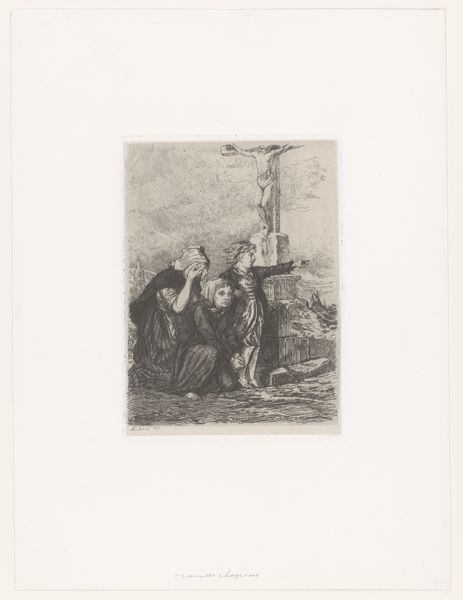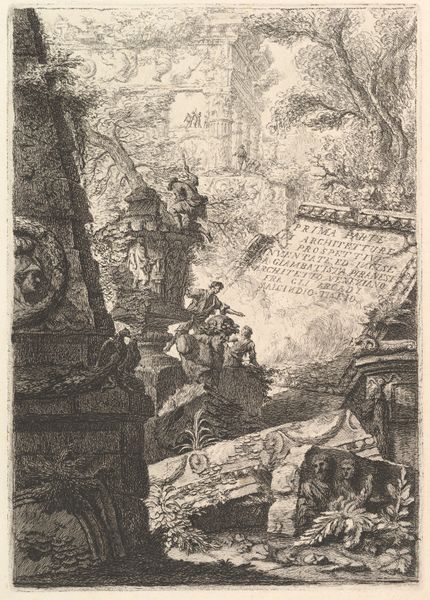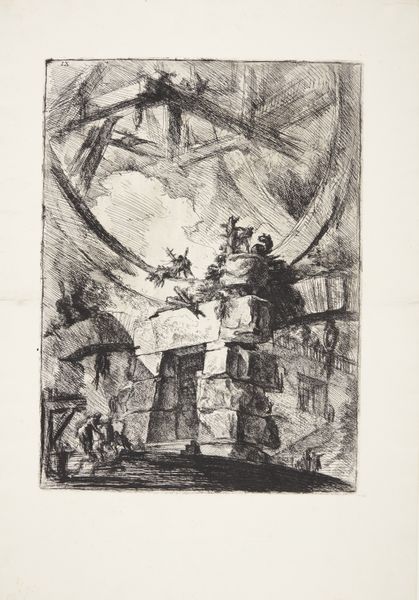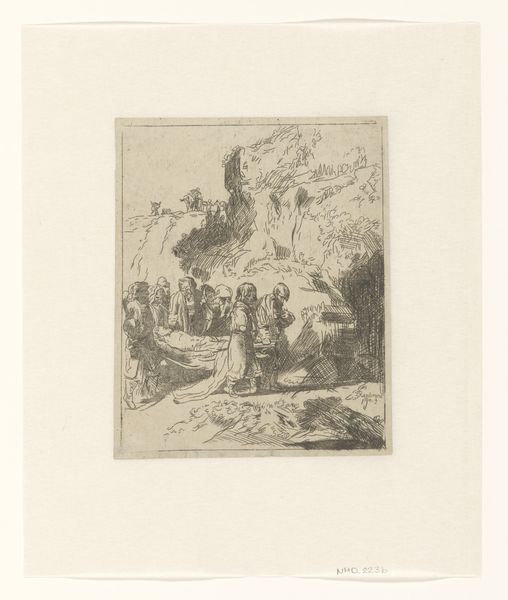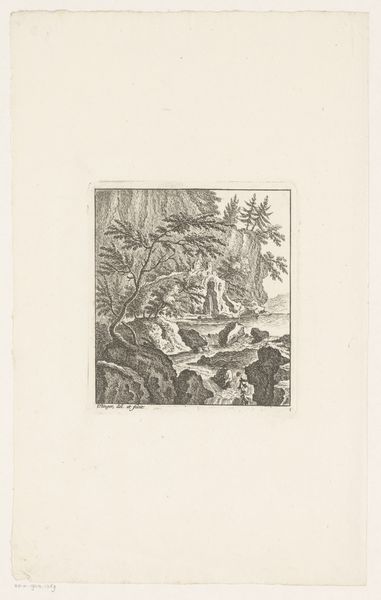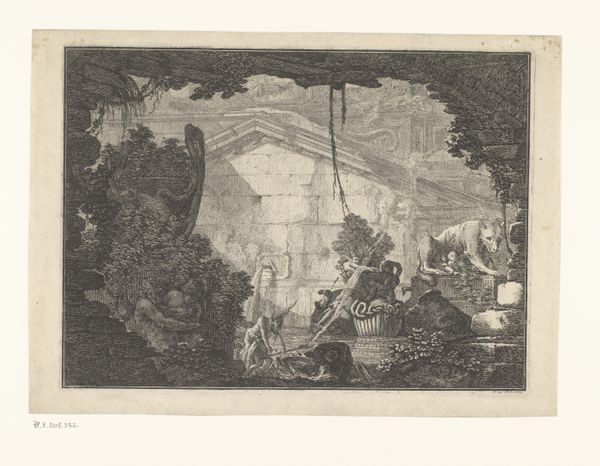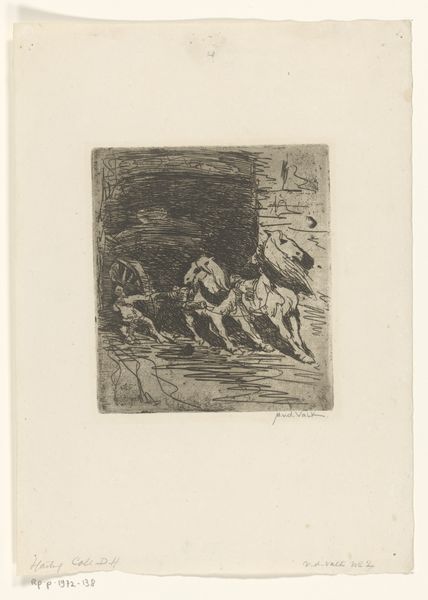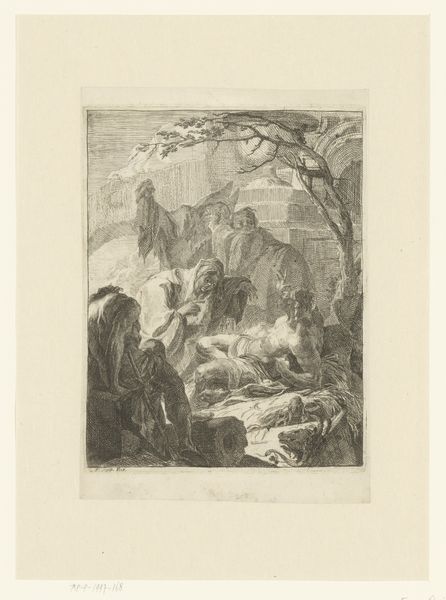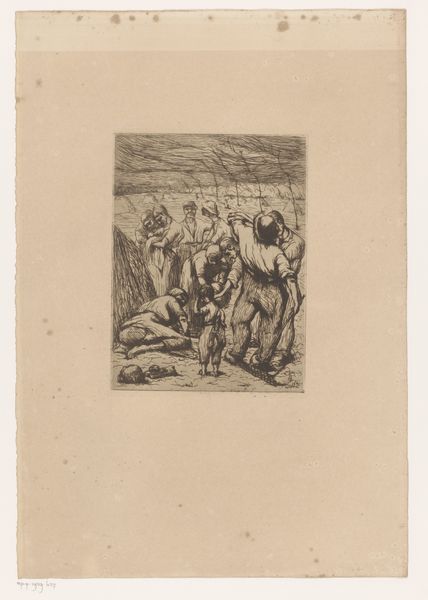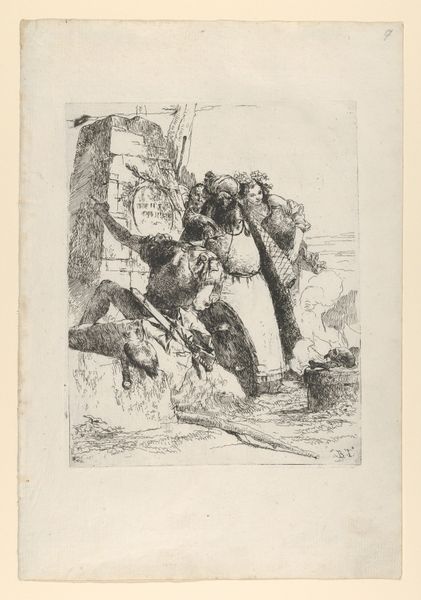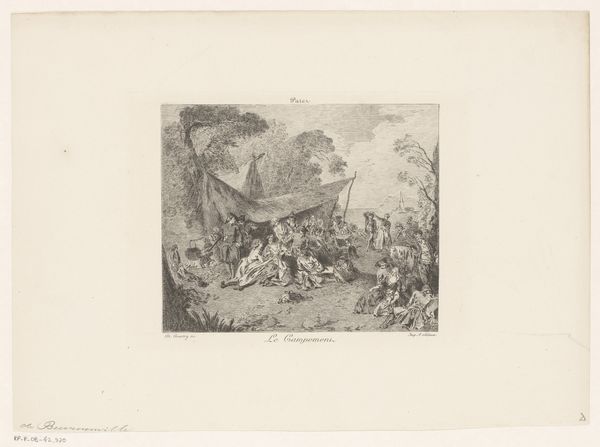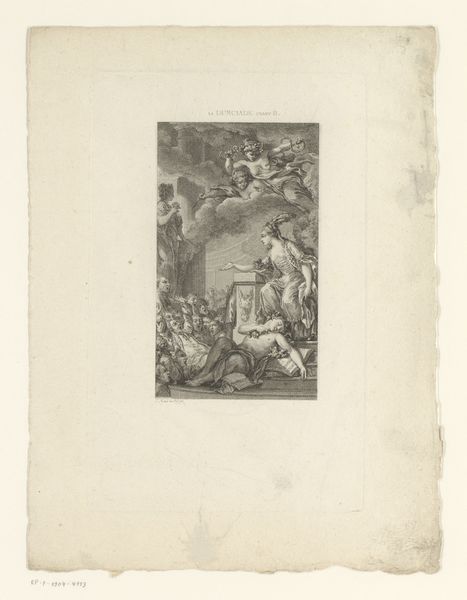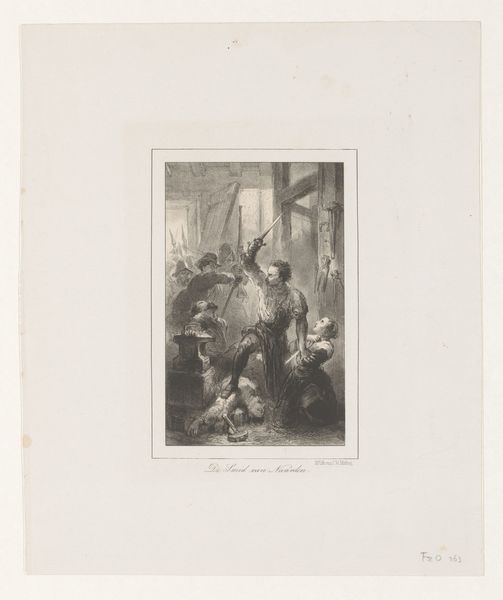
Part one of Architecture and Perspectives; drawn and etched by Gio. Batt'a Piranesi, Venetian Architect, among the Arcadians Salcindio Tiseio 1743
0:00
0:00
drawing, print, etching, engraving, architecture
#
drawing
#
baroque
# print
#
etching
#
landscape
#
classicism
#
history-painting
#
engraving
#
architecture
Dimensions: 355 mm (height) x 250 mm (width) (plademaal)
Editor: So, this is "Part one of Architecture and Perspectives" etched by Giovanni Battista Piranesi around 1743. The use of engraving creates an almost dreamlike scene of classical ruins. What do you see in this print? Curator: Piranesi was not just depicting Roman ruins, but actively constructing a vision of Roman grandeur meant to influence contemporary architectural discourse. He uses these almost stage-like compositions to critique and promote certain architectural ideals. Notice how he emphasizes scale and depth? Editor: Yes, the scale feels deliberately exaggerated, almost theatrical. It feels like he's trying to make a point, beyond just documentation. How did the public receive these kinds of prints at the time? Curator: These weren't simple souvenirs. Piranesi was engaging with a larger 18th-century fascination with the classical world, but also with its potential application to modern society. Prints like this circulated among intellectuals, architects, and patrons, shaping taste and inspiring Neoclassical architecture throughout Europe. Consider the power dynamics implicit in showcasing such imagined power to these audiences. Editor: So, by creating these dramatic scenes of Rome, he was inserting himself into the architectural debates of the time? Almost like visual rhetoric? Curator: Exactly. The composition, the dramatic lighting, even the seemingly objective "documentation" – it all served to promote a specific vision of Rome and its relevance. It makes you wonder about the role artists and images play in constructing our understanding of history itself. Editor: I never thought about prints being such a powerful tool for architectural and political statements. That’s amazing. Curator: It's a reminder that art rarely exists in a vacuum; it's always participating in larger conversations and shaping our perceptions of the world around us.
Comments
No comments
Be the first to comment and join the conversation on the ultimate creative platform.
